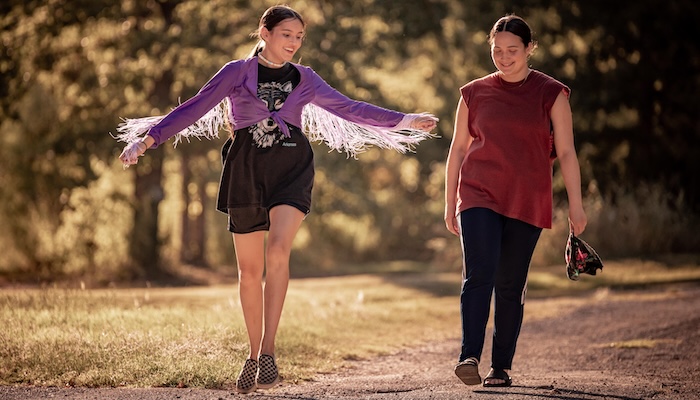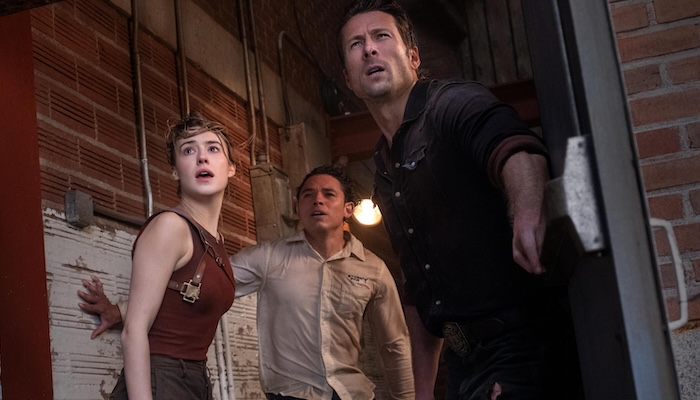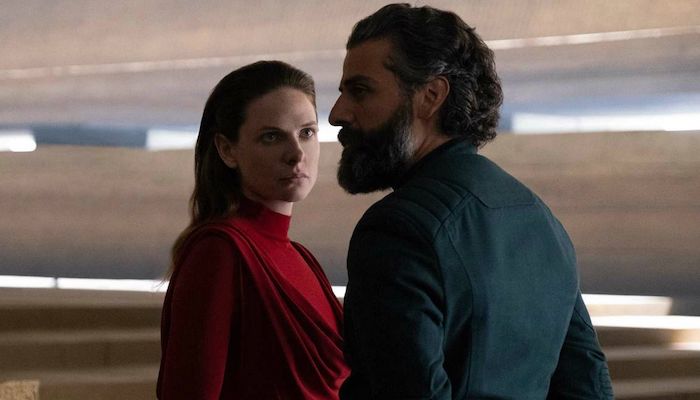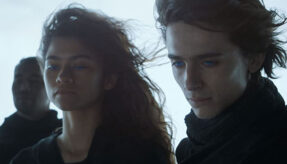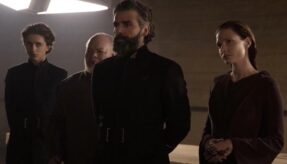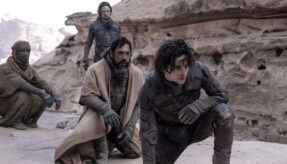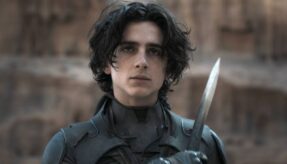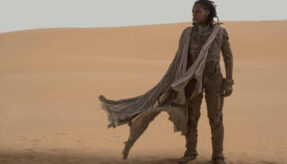Film Review: DUNE: PART 1 (2021): An Entertaining Scifi Movie Combining Style, Originality, & The Best Adaptation of The Source Material
Table of Contents
The Tripod
The Duke, his bound concubine, and the Bene Gesserit form an interesting tripod in Dune: Part 1, a situation brought into the open when Duke Leto Atreides (Oscar Isaac) addresses the Bene Gesserit, the person he barely knows, and not Lady Jessica, during a scene in the first act of Dune.
Rebecca Ferguson’s acting in that moment, and in her walk to the meeting chamber where her bottled emotions blubber free, are what make the scene.
Jessica knows she has not been 100% forthright with Leto and Leto knows and accepts it. It is in Leto’s eleventh hour that he finally tries to communicate with and tap into the Bene Gesserits’ power, the Holtzman Shield that is always there protecting, guiding, and supporting Jessica.
It’s the Bene Gesserit that has always stood silently by in the room when Jessica spoke, her Dexter-like Dark Passenger, minus the latter’s vile impulses. When Jessica’s “Passenger” steps to the forefront in later moments in Dune: Part 1, it is fatal (or nearly fatal – by her leave) for all those that stand in her way.
Ferguson gives the most nuanced portrayal of a character in Dune, with competing motives and emotions playing off each other during critical moments, e.g., Paul’s pain box test with Reverend Mother Gaius Helen Mohiam (Charlotte Rampling) as Jessica is forced to stand outside the room. Throughout a major portion of the film, Lady Jessica is being conterminously pulled in two directions – toward the omnipresent needs of her family and toward the wants and the desires of the Bene Gesserit.
Lady Jessica’s Use of Voice
Lady Jessica’s use of Voice in Villeneuve’s Dune: Part 1 is far more practical than in other incarnations of this story-line, including the source material. In this film, Voice’s usage is direct and to the point. Put more accurately, its vicious. Villeneuve takes an inconsistency in the book and clarifies it but not only that. He creates a build up for it during the first act of the film and makes it’s eventual offense and defensive usage dramatic.
In the TV mini-series, Voice is more of a toy. In the first film adaptation, it’s traditionally used i.e. a play on emotions for the most-part. In Villeneuve’s Dune, it’s a sword, steered directly into an opponent’s vitals.
The Sardaukar
The Sardaukar are no longer the babai of The Empire like in the source material, where they were nebulous and revered for their fanaticism and fighting prowess.
Will the viewer of Dune: Part 1 miss this mystique? No. What is on-screen blows past any utility it could have had in this film.
Instead, the viewer will be very impressed by the brutality on-screen (even for a PG-13 film) regarding the Sardaukar and Salusa Secundus: the dead, unworthy recruits strung up, their blood dripping down into metal basins, dotting the foreheads of all the soldiers that successfully completed the training. Dune: Part 1 screenwriters Jon Spaihts, Eric Roth, and Villeneuve don’t have to say the mortality rate is high on Salusa Secundus or that its soldiers are regimented. They show it.
Related Articles
FilmBook's Newsletter
Subscribe to FilmBook’s Daily Newsletter for the latest news!





